#Doppelmayr
Explore tagged Tumblr posts
Text

Johann Gabriel Doppelmayr "Hemisphaerium Coeli Australe in quo Fixarum loca secundum Eclipticae ductum ad anum 1730."
0 notes
Text

La Paz is rightly proud of these cable cars. Great views, super cheap and you can get anywhere in the city. The teleférico is brilliant. It's a network of 10 or more cable cars (built by Doppelmayr) and the perfect way to get around -- and see -- the city, especially given the steep slopes and the altitude. Although you can't buy a day ticket, fares are cheap, using a pre-paid card you can top-up. And if you take another car shortly after getting off, you pay less. Mi Teleférico won a Latam Smart City Award in the category of "Sustainable urban development and mobility. Wikipedia
105 notes
·
View notes
Text

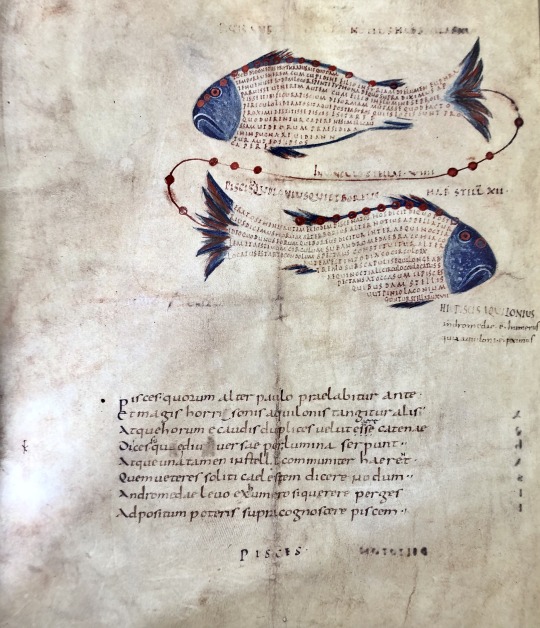

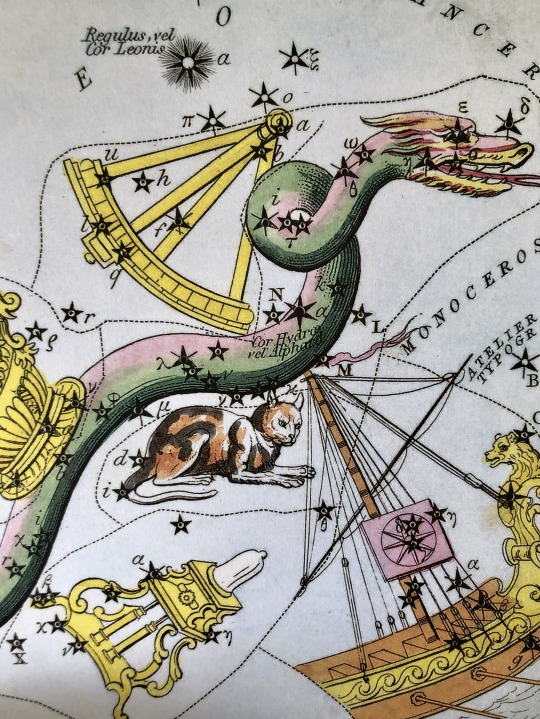
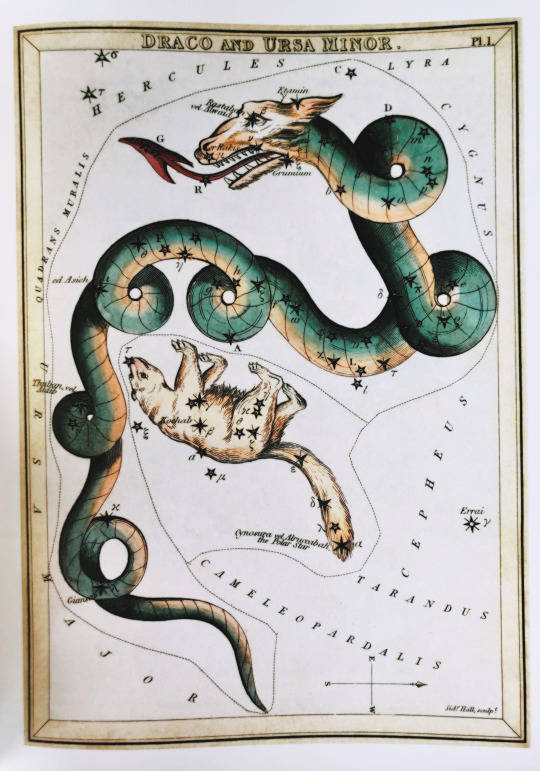

Elena Percivaldi shows the graphically most beautiful and interesting pages of various celestial atlases, often in full-page format and in high quality. The author provides short and knowledgeable captions that explain the necessary context or refer to particular details of the illustration. There are also biographical sketches of the cartographers, which place their work in the context of the history of science. List of Content Peter Bienewitz Apian: Astronomicum Caesarum, 1540 Johan Bayer: Uranometria, 1603 Julius Schiller: Coelum Stellatum Christianum, 1627 Andreas Cellarius: Harmonia Macrocosmica, 1660 Johannes Hevelius: Prodromus Astranomiae, 1690 John Flamsted: Atlas Coelestis, 1729 Johann Gabriel Doppelmayr: Atlar Coelestis, 1742 Johann Elert Bode: Uranographia, 1801 Alexander Jamieson: A Celestial Atlar, Comprising a Systematic Display of the Heavens, 1822 Urania's Mirror, 1824 Elijah Hinsdale Burritt: Geography of the Heavens, 1833
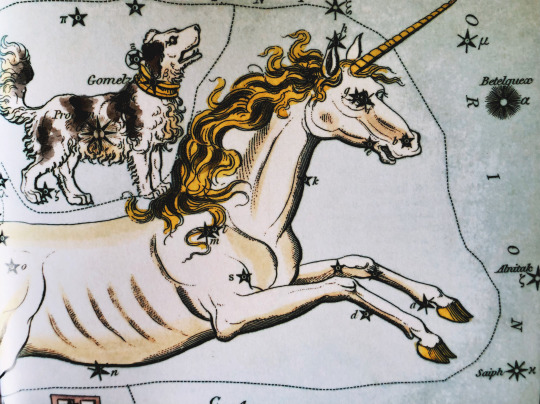
17 notes
·
View notes
Text

Burritt's Constellation Atlas of the Northern hemisphere, 1856
Fasciculus: 1856 Burritt - Huntington Map of the Constellations of the Northern Hemisphere
Rare hand colored map engraved by W. G. Evans of New York for Burritt’s 1856 edition. Constellations are drawn in detail and include depictions of the Zodiacal figures the stars are said to represent. Chart is quartered by lines indicating the Solstitial and Equinoctial Colures and Includes Ursa Major (Great Bear or Big Dipper), Usra Minor (the Little Bear or Little Dipper), Draco (the Dragono), Cassiopeia (the W), Perseus, Camelopardalis, and Cepheus. .
Like all of Burritt’s charts, is based on the celestial cartographic work of Pardies and Doppelmayr. Dated and copyrighted: “Entered according to Act of Congress in the year 1856 by F. J. Huntington in the Clerks Office of the District Court of the United States in the Southern District of N. York. Datum 1856
https://la.m.wikipedia.org/wiki/Fasciculus:1856_Burritt_-Huntington_Map_of_the_Stars%5E_Constellations_of_the_Northern_Hemisphere_-Geographicus-_ConstNorth-burritt-1856.jpg
9 notes
·
View notes
Text
Arrival of Telegram founder Pavel Durov in Kyrgyzstan sparks hopes for investment in ski resorts
Russian billionaire Pavel Durov’s appearance in Kyrgyzstan sparked speculation that he would invest in Central Asia’s largest ski resort, Three Peaks, according to bne IntelliNews.
Societe Des Trois Vallees (S3V), operator of the luxury Courchevel ski resort in France, will design the Kyrgyz ski resort. Durov arrived in the Issyk-Kul region late last week, according to local reports.
Pavel Durov, founder of messenger Telegram and social network VKontakte, whose fortune is estimated by Forbes at $15.5 billion, recently posted on social media that he planned to visit Central Asia. However, he did not mention his involvement in Three Peaks.
I keep working, meeting with our [social network] users from unusual places. This summer I decided to visit Central Asia to see life there and study how people use Telegram and what are their digital needs.
On 10 June, the head of Kyrgyzstan‘s Cabinet of Ministers, Akylbek Japarov, told an investment forum in Vienna how the country would position itself as a leading ecotourism destination, capitalising on the legendary Tian Shan Mountains (“Mountains of Heaven”) and the steppes of the Ancient Silk Road.
We are starting the construction of the ‘Kyrgyz Courchevel’. The French company S3V, one of the first operators of the world-famous resort in France, is implementing Three Peaks ski cluster in Kyrgyzstan. The plan is to lay about 200 kilometres [124 miles] of ski trails. The resort will operate all year round and will be able to receive up to 850,000 tourists annually.
Last week, Japarov signed a decree establishing a Kyrgyz Courchevel state enterprise under the Department of Presidential Affairs. The first phase of investment in the project could cost nearly $165 million. Kyrgyzstan also planned to open a second resort near Bishkek, Japarov revealed.
In winter, this will be a unique opportunity to ski literally a 20-minute drive from the capital Bishkek. All technical structures will be built by Austrian company Doppelmayr.
Kyrgyzstan’s hopes for exciting tourism growth also depend on the development of facilities around Issyk-Kul lake. It is the second largest mountain lake in the world after Lake Titicaca located on the border of Bolivia and Peru.
Kazakhstan and Uzbekistan have also established ski resorts on their territories in the Tian Shan, part of a Himalayan belt.
Read more HERE

#world news#world politics#news#telegram#pavel durov#kyrgyzstan#ski resort#tian shan#current events#current reality#current news#global news
1 note
·
View note
Text
Sapa: Die Berge in Vietnam (23. - 26.9.)
Am Samstag checken wir nach ein paar Stunden wenig erholsamen Schlafes wieder aus dem Hotel aus. Es ist mega hellhörig und laut, seit 6 Uhr machen die Katze, andere Gäste, der Fahrstuhl direkt nebenan und das Reinigungspersonal Radau. Das Zimmer ist dreckig, die Bettwäsche fühlt sich ungewaschen an und hält diverse Fremdhaare für uns bereit und vom vergammelten 'Badezimmer' will ich gar nicht erst anfangen. Nach Schilderung dieser Beschwerden zeigt sich der Inhaber kulant und wir müssen nur die eine Nacht bezahlen. Wir buchen spontan weitere drei Nächte in einer anderen Unterkunft, außerhalb der Stadt, ein Dorf weiter in den Bergen. Die Taxifahrt dorthin ist abenteuerlich: Serpentinen, an einigen Stellen eine ungeteerte, steinige Straße, riesige Schlaglöcher, fantastische Ausblicke über das Tal und die Reisterrassen.
Die neue Unterkunft ist ein Bungalow am Hang mit integriertem Mückennetz. Dringend nötig, denn hier draußen erwarten uns alle Arten von Insekten in unserer quasi nach draußen offenen Hütte, und die daumengroßen Kakerlaken sind eine kleine Herausforderung.
Mittlerweile ist es nachmittags, und wir beginnen auf Empfehlung unserer Gastgeberin (die nur sehr begrenzt Englisch spricht) eine Wanderung den Hang entlang zum nächsten kleinen Dorf. Der Pfad ist teils steinig, teils lehmig und schlammig und steht am Ende sogar richtig unter Wasser, sodass wir nach einer Stunde leider umdrehen müssen (hier wären unsere Wanderschuhe statt der Sneaker das richtige Schuhwerk gewesen). Bis dahin ist der Ausflug richtig schön, denn das Wetter ist angenehm frisch (26 Grad und kühler Wind), wir laufen mitten durch die Reisterrassen, können den Einheimischen bei ihrer ganz ursprünglichen Arbeit zusehen, sehen viiieeele Kinder und Hunde und gehen auf dem schmalen Pfad sogar auf Tuchfühlung mit ein paar uns entgegenkommenden Büffeln.
Den Sonntag nutzen wir komplett für eine Wanderung, dieses Mal mit entsprechendem Schuhwerk. Ich lade die App Komoot auf mein Handy, bezahle für das weltweit Paket und habe dank GPS sofort ein Dutzend Routen in unserer Nähe zur Auswahl. Wir entscheiden uns für mittelschwer und etwa 10km. Die Navigation klappt gut, nur an einer Stelle müssen wir etwas länger einen Pfad suchen. Die Route führt durch Dörfer der Einheimischen, nur ganz kurz auf Straßen und hauptsächlich mitten durch die Reisfelder und den Bambuswald. An einer Stelle müssen wir einen Fluss überqueren bzw. etwas dem Flussbett folgen. Mancherorts ist der Pfad kaum zu erkennen, an anderen Stellen überflutet, im Wald super lehmig und matschig, an einer Stelle kreuzt er einen fremden Hof und wir entkommen nur knapp einer Konfrontation mit den vier scharfen Hofhunden (einer zwickt mich ins Bein, aber keine offene Wunde).
Auf dem Rückweg gönnen wir uns super leckeres lokales Essen und meistern dann noch den letzten Aufstieg zu unserer Hütte. Dank einiger Steigung und ordentlich Sonne war das ganz schön anstrengend!
Am Montag machen wir einen Ausflug zum Mount Fansipan, dem höchsten Berg Vietnams, auch genannt das Dach von Indochina. Wir mieten einen Roller und fahren zum eigens dafür gebauten Sapa Bahnhof (Torben fährt wieder sehr souverän, der Verkehr ist hier auch nicht so verrückt wie anderswo in Vietnam, aber die Serpentinen sind anspruchsvoll). Nachdem wir jeder etwa 40€ (!!!) bezahlt haben, geht es mit einer Art Zug (mit Stufen gebaut, also irgendwie eine Mischung aus Zug und Schrägaufzug) etwa 5 Minuten zum Startpunkt der Seilbahn auf den Gipfel. Bereits die Bahnfahrt ist echt abenteuerlich, denn die Bahnschiene schwebt nach links und rechts frei etwa 25m über dem Boden. Die Aussicht ist atemberaubend. Die Gondel auf den Gipfel toppt das aber noch um Meilen. Die Seilbahn ist gebaut von Doppelmayr, was mich auf dem Weg nach oben irgendwie beruhigt: Sie hält den Rekord für den höchsten Höhenunterschied zwischen Start und Ende. Und ich sag's euch, das merkt man. Es ist gigantisch hoch!! Erst geht's über die Reisterrassen und Häuser im Tal und dann über die Berge. Der höchste Punkt führt über eine Schlucht und ist so hoch, dass man den Fluss ganz unten nur noch erahnen kann. Das kann auch nur ich euch bezeugen, denn Torben hat die meiste Zeit die Augen zu. Die Fahrt dauert etwa 15 Minuten und nach 10 Minuten durchbrechen wir die Wolkendecke und fahren einige Minuten völlig blind in den Wolken. Verrückt, ich sag's euch!
Oben angekommen sind es noch 600 Stufen bis zum Gipfel. Genauer gesagt gibt es nicht nur einen Gipfel, sondern viele Statuen (unter anderem einen 22 (!)m hohen Buddha auf einem Lotusblatt), Treppen, Aussichtspunkte und Schreine. Die Anlage hier oben ist weitläufig und atemberaubend und die benötigten Millionen Tonnen an Stein wurden von den Vietnamesen zu Zeiten des Baus zu Fuß durch den Dschungel nach oben getragen. Zwar ist es heute stark bewölkt, aber das Erlebnis ist dennoch einmalig. Auch die 'nur' 600 Stufen sind auf 3140m extrem anstrengend, da die Luft zum Atmen dünn ist. Wir lassen uns sehr viel Zeit, machen zig Fotos, kosten das Erlebnis richtig aus. Das Geld hat sich definitiv gelohnt!
Am Dienstag geht es zurück nach Hanoi (dieses Mal braucht die Buchung des Busses 3 Anläufe, bis wir eine Verbindung erwischen, die nicht gestrichen wird), wo wir gegen Mittag ankommen und eine Nacht verbringen, bevor es morgen weiter geht - nach Laos!
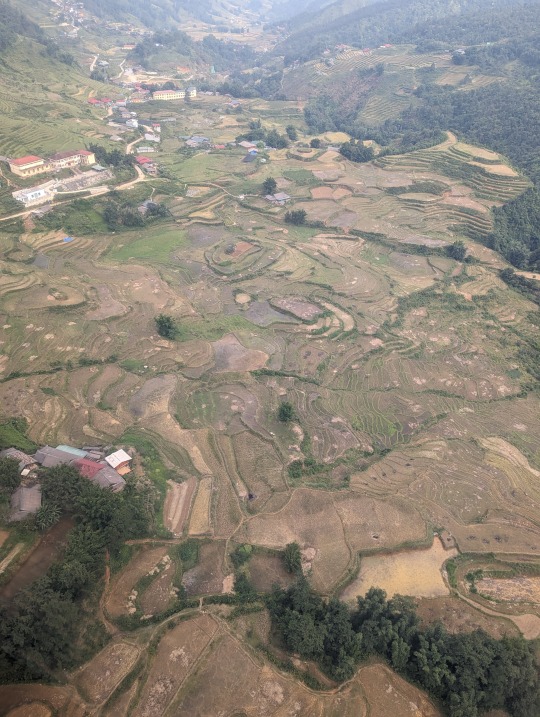


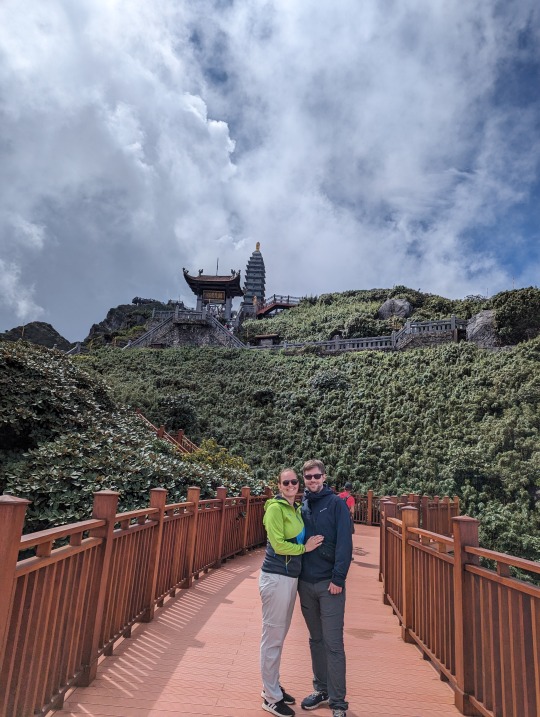



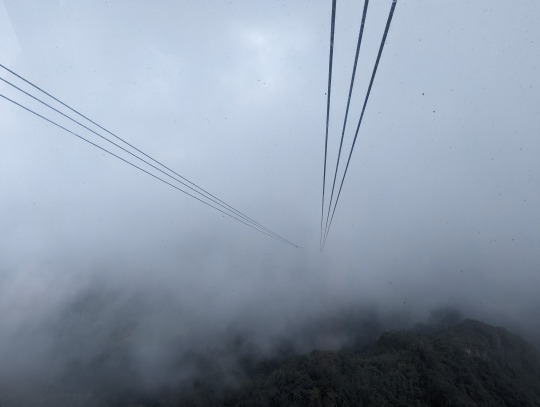
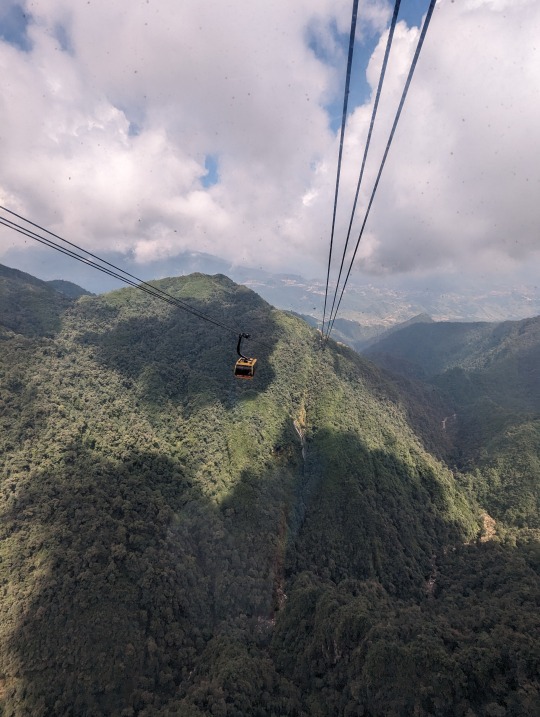

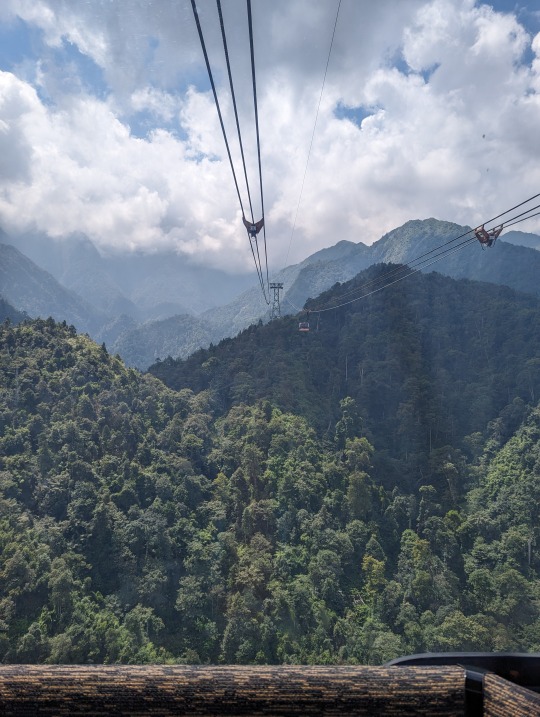
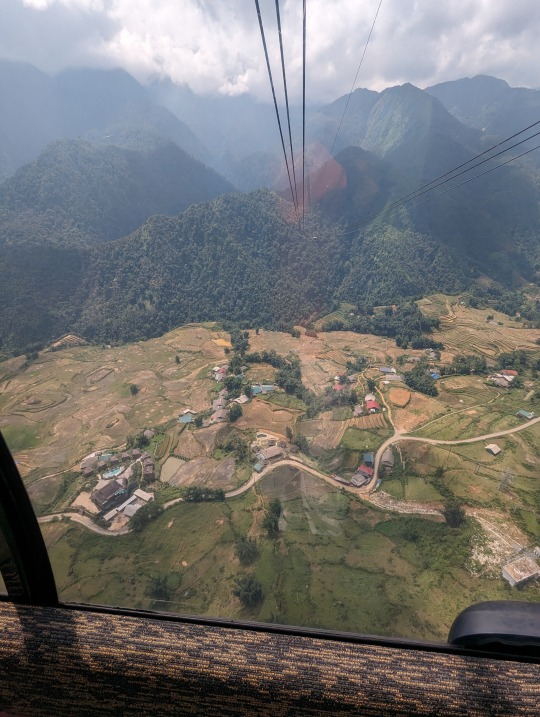




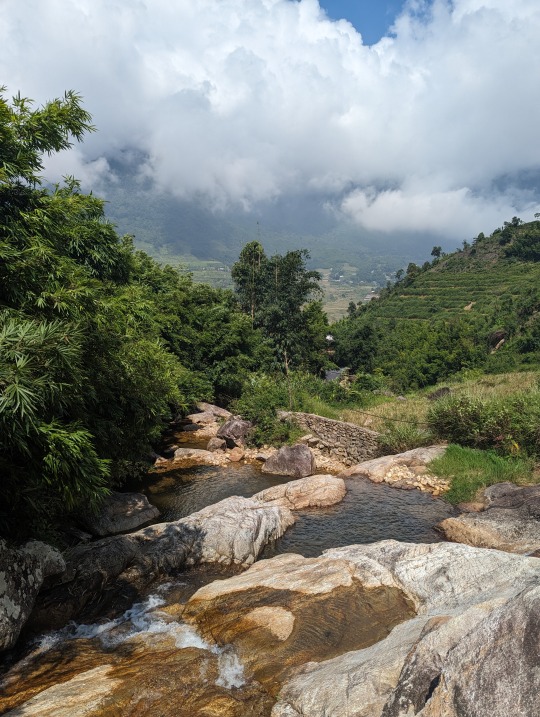
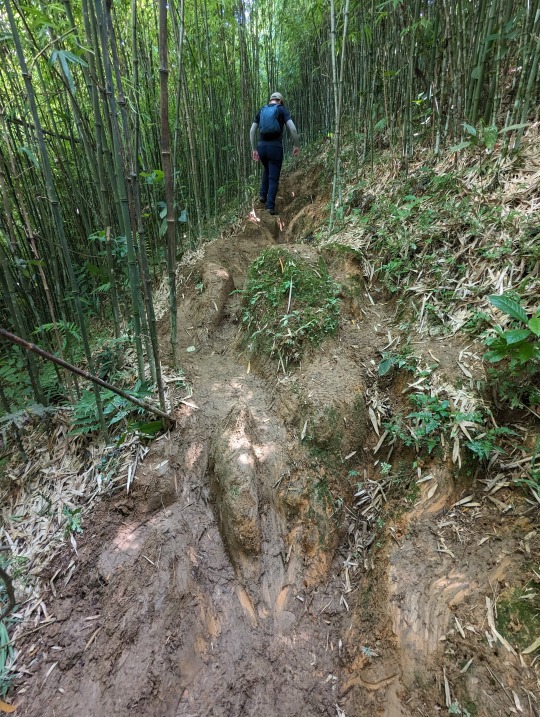

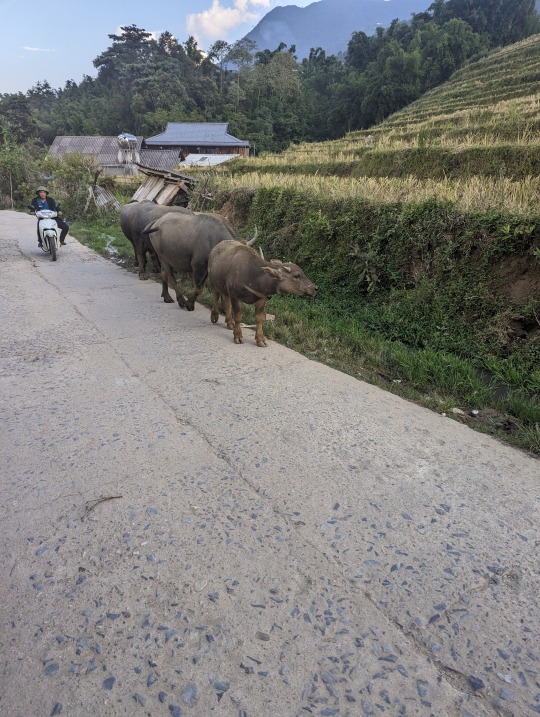

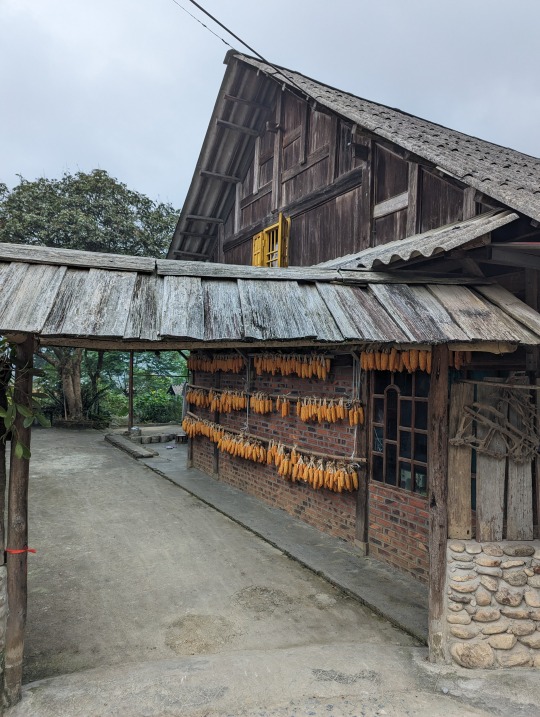
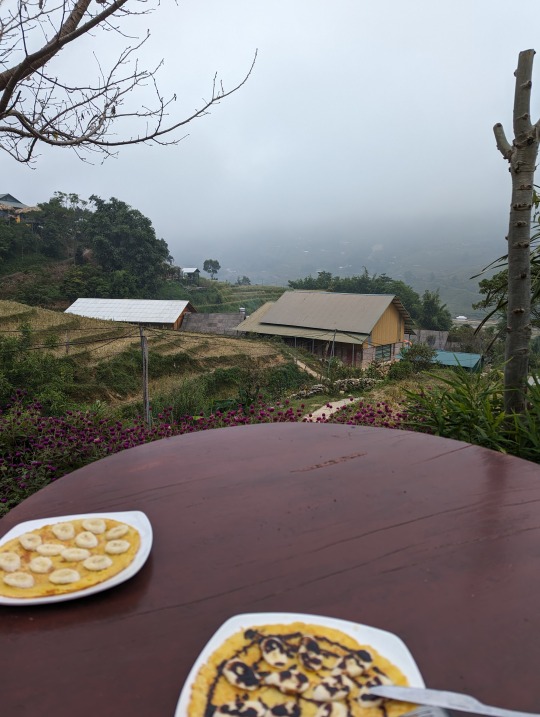

3 notes
·
View notes
Text
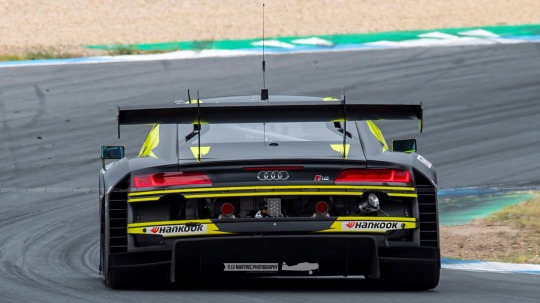
24H Series - Hankook 12H Estoril 2023. - P2
Team: Scherer Sport PHX
Car: Audi R8 LMS GT3 EVO II
Drivers: Doppelmayr-Kaffer-Erhart-Jöns
#instaracing #instacar #motorsport #carporn #carswithoutlimits #amazingcars247 #supercar #carinstagram #petrolhead #nikon4sport #autosport #instaworld #instapic #instamotorsports #gt3 #audi #24hseries #12hestoril #audir8lmsgt3evo2 #hankook12hestoril #homeofgt3racing #homeofgt4racing #homeofgtracing #enduranceracing #instapicoftheday #gtcars #endurancemotorsport #nikonphotography #nikon_photography_ #photoofthedays
2 notes
·
View notes
Photo

🎊 Happy Eastern 🥚 Made by @jasna_nizke_tatry #ostern #easter #eastereggs #seilbahntechnik #ropeway #mountains #seilbahn #slowakei #doppelmayr #travelblog #travelin #visiteurope https://instagr.am/p/CqzqBMFMamA/
2 notes
·
View notes
Text
ba na hills
Ba Na Hills - The Ultimate Destination in Da Nang
Located over 20 km from Da Nang city center, Sun World Ba Na Hills is part of the Sun World entertainment brand, offering a world-class resort and amusement complex. Perched at an altitude of 1,487 meters above sea level, Ba Na Hills is often described as a "fairyland," blessed with a cool climate and breathtaking landscapes. Visitors can experience four seasons in a single day, along with a wide range of festivals, entertainment activities, and diverse culinary delights. Join Joytime to explore Ba Na Hills in detail!
1. Best Time to Visit Ba Na Hills
Ba Na Hills opens from 8:00 AM to 10:00 PM daily, but most attractions and services operate from 8:00 AM to 5:00 PM
2. The World’s Longest Single-Wire Cable Car
The Ba Na Hills cable car system was constructed by Doppelmayr, a world-renowned cable car manufacturer from Austria.
3. Top 8 Iconic Check-in Spots at Ba Na Hills
3.1. The Time Gate
3.2. Eclipse Square
3.3. Golden Bridge
3.4. Le Jardin D’Amour Flower Garden
3.5. French Village
3.6. Debay Ancient Wine Cellar
3.7. Moon Castle
3.8. Sun God Waterfall
4. Fantasy Park – Indoor Entertainment
5. Festivals All Year Round
5.1. Ba Na Sun Festival (January to August)
5.2. Ba Na Moon Festival (September to December)
6. Gastronomy – A Culinary World Tour
Ba Na Hills offers a diverse dining scene with buffet restaurants serving up to 90 dishes, including Asian, European, and traditional Vietnamese cuisine....
Website: https://joytime.vn/en/blog/9542-ba-na-hills-da-nang.html
Pinterest: https://www.pinterest.com/pin/1018024690776599017
#joytime #banahills
0 notes
Text
Detachable Ropeway Market Forecast 2025-2031: Evaluating Growth Factors, Segments, and Emerging Trends
According to our (Global Info Research) latest study, the global Detachable Ropeway market size was valued at US$ million in 2024 and is forecast to a readjusted size of USD million by 2031 with a CAGR of %during review period. This report is a detailed and comprehensive analysis for global Detachable Ropeway market. Both quantitative and qualitative analyses are presented by manufacturers, by region & country, by Type and by Application. As the market is constantly changing, this report explores the competition, supply and demand trends, as well as key factors that contribute to its changing demands across many markets. Company profiles and product examples of selected competitors, along with market share estimates of some of the selected leaders for the year 2025, are provided. "Detachable Ropeway" 2025 Breakdown, Data Source, Secondary Sources, Primary Sources, Research Report delivers leading competitors strategic analysis, with micro and macro-economic factors, market trends, future growth scenarios, with pricing analysis. This report provides a holistic overview on Market Current Situations, Key Collaborations, Merger & Acquisitions along with Trending Innovations and New Business Development Policies. A detailed professional report focusing on primary and secondary growth drivers, regional segments, growth share, and geographical analysis of top key players. Detachable Ropeway trend analysis with historical data, estimates to 2025 and Compound Annual Growth Rate (CAGR) forecast to 2031.
Top Key Players Covered in Market Report 2025-2031:Doppelmayr、POMA、LEITNER、Promociones Munich C.A.、Nippon Cable、MND、Zatran GmbH、Nidec Industrial Short Description of the Detachable Ropeway 2025-2031: Market Overview of Global Detachable Ropeway: According to our latest research, the global Detachable Ropeway looks promising in the next 6 years. As of 2025, the global Detachable Ropeway was estimated at USD Million, and it’s anticipated to reach USD Million in 2031, with a CAGR during the forecast years. This report covers a research time span from 2020 to 2031, and presents a deep and comprehensive analysis of the global Detachable Ropeway, with a systematical description of the status quo and trends of the whole market, a close look into the competitive landscape of the major players, and a detailed elaboration on segment markets by type, by application and by region. Global and Regional Analysis: North America (United States, Canada and Mexico) Europe (Germany, France, United Kingdom, Russia, Italy, and Rest of Europe) Asia-Pacific (China, Japan, Korea, India, Southeast Asia, and Australia) South America (Brazil, Argentina, Colombia, and Rest of South America) Middle East & Africa (Saudi Arabia, UAE, Egypt, South Africa, and Rest of Middle East & Africa)
Market Segmentation Detachable Ropeway report provides an exhaustive 360-degree analysis, by utilizing both primary and secondary research techniques. The research gained comprehensive insights into current market dynamics, pricing trends, developments, supply-demand and evolving consumer behaviors.
On the basis of product type, this report displays the production, revenue, price, market Below 5 People、5-10 People、Above 10 People
On the basis of the end users/applications, this report focuses on the status and outlook for major applications/end users, consumption (sales), market share and growth rate for each Ski Resort、Vacation Spot、Others
Our method for estimating market size is holistic and multifaceted. We assess vital industry trends, regulatory landscapes, and segment-specific dynamics, evaluating their potential influence on demand projections. Key macroeconomic factors, including price fluctuations, demographic shifts, and changes in demand patterns, are integrated into our calculations. To discover market value, we not only delve deep into the profiles of prominent players and their global market shares but also rely on our frequently updated internal database, enriched with insights and announcements from pivotal market stakeholders.
Some of the Key Questions Answered in this Report: 1. What is the Detachable Ropeway size at the regional and country level
2. What are the key drivers, restraints, opportunities, and challenges of the Detachable Ropeway, and how they are expected to impact the market
3. What is the global (North America, Europe, Asia-Pacific, Latin America, Middle East, and Africa) sales value, production value, consumption value, import and export of Detachable Ropeway
4. Who are the global key manufacturers of the Detachable Ropeway? How is their operating situation (capacity, production, sales, price, cost, gross, and revenue)
5. What are the Detachable Ropeway opportunities and threats faced by the vendors in the Detachable Ropeway?
6. Which application/end-user or product type may seek incremental growth prospects? What is the market share of each type and application?
7. What focused approach and constraints are holding the Detachable Ropeway?
8. What are the different sales, marketing, and distribution channels in the global industry?
9. What are the key market trends impacting the growth of the Detachable Ropeway?
10. Economic Impact on the Detachable Ropeway and development trend of the Detachable Ropeway
11. What are the Detachable Ropeway opportunities, market risk, and market overview of the Detachable Ropeway
The content of the study subjects, includes a total of 15 chapters: Chapter 1, to describe Hydrogen Bromide product scope, market overview, market estimation caveats and base year. Chapter 2, to profile the top manufacturers of Hydrogen Bromide, with price, sales, revenue and global market share of Hydrogen Bromide from 2020 to 2025. Chapter 3, the Hydrogen Bromide competitive situation, sales quantity, revenue and global market share of top manufacturers are analyzed emphatically by landscape contrast. Chapter 4, the Hydrogen Bromide breakdown data are shown at the regional level, to show the sales quantity, consumption value and growth by regions, from 2020 to 2031. Chapter 5 and 6, to segment the sales by Type and application, with sales market share and growth rate by type, application, from 2020 to 2031. Chapter 7, 8, 9, 10 and 11, to break the sales data at the country level, with sales quantity, consumption value and market share for key countries in the world, from 2020 to 2024.and Detachable Ropeway forecast, by regions, type and application, with sales and revenue, from 2026 to 2031. Chapter 12, market dynamics, drivers, restraints, trends and Porters Five Forces analysis. Chapter 13, the key raw materials and key suppliers, and industry chain of Hydrogen Bromide. Chapter 14 and 15, to describe Hydrogen Bromide sales channel, distributors, customers, research findings and conclusion. Global Info Research is a company that digs deep into global industry information to support enterprises with market strategies and in-depth market development analysis reports. We provides market information consulting services in the global region to support enterprise strategic planning and official information reporting, and focuses on customized research, management consulting, IPO consulting, industry chain research, database and top industry services. At the same time, Global Info Research is also a report publisher, a customer and an interest-based suppliers, and is trusted by more than 30,000 companies around the world. We will always carry out all aspects of our business with excellent expertise and experience.
0 notes
Text

Novo teleférico do Complexo do Alemão
A antiga empresa Poma foi abandonada, começam as obras de demolição de seis estações “Bonsucesso, Adeus, Baiana, Alemão, Itararé e Palmeiras” há 8 semanas.
A nova empresa Doppelmayr inicia obras para construção do teleférico em seis estações “Bonsucesso, Adeus, Baiana, Alemão, Itararé e Palmeiras”.
0 notes
Text
Lista de campeões Endurance racing & GT Racing 2024 PARTE 2
GT4 Light

Gabriel e Carlos Vallone-Audi RS3 LMS TCR\Chevrolet Cruze Stock Car-Arias
Super GT
GT500

Sho Tsuboi\Kenta Yamashita -Toyota GR Supra GT500-TGR TEAM TOMS AU
GT300

Takashi Kogure/Yuya Motojima - Lamborghini Huracan GT3 Evo 2-JLOC
GTWC Europe-Endurance
Geral

AF Corse-Pier Guide\Calado\Rigon-Ferrari 296 GT3
Gold Cup

Saintloic Racing-Evrard\Magnus\Pla-Audi R8 LMS EVO II
Silver Cup

Winward Racing-Arrow\Caresani\Tanart-Mercedes-AMG GT3 Evo
Bronze Cup

AF Corse-Bertolini\Machielis\Machielis-Ferrari 296 GT3
Intercontinental GT Challenge-geral e Pró

Charles Weerts-BMW M4 GT3-Team WRT
Independent Cup

Au Antares-Porsche 992 GT3 R-Herberth\EBM\Lionspeed GP
Asia Le Mans Series
LMP2
Crowdstrike BY APR-Oreca

Braun\Kurtz\Jakobssen
LMP3

Cool Racing-Bukhantsov\Winslow-Ligier
GT3

Pure RX-Malikhin\Strum\Bachler-Porsche 992 GT3 R
24H Series
GT3 PRÓ

Bohn\Hart\Noble-Porsche 992 GT3 R-Hertberth Motorsport
GT3 Pró-Am

Kaffer\Doppelmayr\Elia Erhart-Audi R8 LMS EVO-Saintloic jr Team
GTX

Amrouche\Courtois\Bonnel-Vortex 1.0-Vortex
0 notes
Text
The right elevator company is important for ensuring safety and efficiency in your building. Here are the best 10 elevator companies in Delhi NCR known for their quality and reliability
Kone Elevators – An elevator manufacturer with a track record for using modern technology that leads the world.
Attico Elevators – Renowned as one of the best elevator companies they offer innovative designs and exceptional service.
Otis Elevators – With a strong reputation Otis is known as a top elevator manufacturer worldwide.
Schindler Group – Offers comprehensive elevator solutions tailored to diverse needs.
Thyssenkrupp – Known for advanced technology and a wide range of elevator products.
Mitsubishi Elevators – Combines modern design with reliable performance.
LG Elevators – Offers customized solutions for residential and commercial buildings.
Alimak – Experts in construction and industrial elevators.
Doppelmayr – Focuses on transportation solutions including innovative elevator designs.
SAVARIA – A leading provider of residential elevators and accessibility solutions.
For the very best in terms of customer service and safety innovation Get in touch with the Delhi leading elevator manufacturer and company Attico Elevators.
#bestelevatorcompany#elevatormanufracturers#elevatorcompanyindelhi#bestelevatormanufracturers#bestelevatorcompanyindelhi
0 notes
Text
Global Aerial Ropeway Market Dynamics and Future Landscape Review 2024 - 2031
The global aerial ropeway market is gaining momentum, driven by the need for efficient transportation solutions in urban and rural areas, as well as for tourism and recreational activities. Aerial ropeways are increasingly recognized for their ability to navigate challenging terrains and reduce congestion in densely populated regions.

Overview of Aerial Ropeways
The global aerial ropeway market is on a growth trajectory, fueled by urbanization, tourism, and the need for sustainable transport solutions. With technological advancements and increasing investments in infrastructure
Aerial ropeways, also known as cable cars or gondolas, are systems of transport that use cables to pull passenger cabins or freight across spans of air. They are commonly used in mountainous regions, urban environments, and for tourist attractions, providing a unique mode of transportation.
Types of Aerial Ropeways
Gondola Lifts
Enclosed cabins that provide a comfortable ride for passengers.
Ideal for urban transport as well as ski resorts.
Chairlifts
Open-air seats attached to a cable, typically used in ski areas.
Allow for easy access to mountain slopes.
Tramways
Large cabins that can accommodate more passengers or cargo.
Often used in tourist destinations to transport visitors over scenic landscapes.
Market Drivers
Urbanization and Traffic Congestion
Rapid urbanization is leading to increased traffic congestion in major cities. Aerial ropeways offer a viable solution for alleviating congestion by providing a direct mode of transport that bypasses ground-level traffic.
Tourism Growth
The tourism industry is a significant driver of the aerial ropeway market. Popular tourist destinations are increasingly installing cable car systems to enhance visitor experiences and provide unique sightseeing opportunities.
Environmental Sustainability
Aerial ropeways are viewed as a sustainable transportation alternative due to their low environmental impact. They require less land than traditional transport systems and can be powered by renewable energy sources, making them an attractive option for eco-conscious communities.
Regional Analysis
North America
In North America, the aerial ropeway market is primarily driven by ski resorts and tourist attractions. The region has a well-established infrastructure, with several successful installations in mountainous areas.
Europe
Europe is a leader in the aerial ropeway market, with numerous cable cars and gondola systems in operation. The emphasis on sustainable transport solutions and increased investment in urban mobility projects are propelling market growth.
Asia-Pacific
The Asia-Pacific region is expected to witness significant growth in the aerial ropeway market due to rapid urbanization and increasing investments in infrastructure. Countries like China and India are focusing on developing aerial ropeway systems to address transportation challenges in densely populated urban areas.
Key Players in the Market
Doppelmayr Garaventa Group
A leading manufacturer of cable car systems, known for its innovation and extensive portfolio in the aerial ropeway industry.
Leitner Ropeways
Offers a wide range of aerial ropeway solutions, specializing in both urban transport and ski area installations.
POMA
Known for its cutting-edge technology and sustainable solutions in aerial transport, POMA has a strong presence in the global market.
Future Trends
Technological Innovations
The future of the aerial ropeway market is likely to be shaped by technological advancements, such as automated systems, smart controls, and enhanced safety features. Innovations in materials and construction methods will also improve efficiency and reduce operational costs.
Integration with Urban Transport
Aerial ropeways are increasingly being integrated into existing urban transport systems. This trend will enhance accessibility and connectivity in cities, providing a comprehensive public transport solution.
Expansion in Developing Regions
As developing countries focus on improving their transportation infrastructure, the demand for aerial ropeways is expected to rise. These systems provide cost-effective solutions to transportation challenges, particularly in hilly or congested areas.
Conclusion
The global aerial ropeway market is on a growth trajectory, fueled by urbanization, tourism, and the need for sustainable transport solutions. With technological advancements and increasing investments in infrastructure, aerial ropeways are poised to become an integral part of modern transportation systems. As cities seek innovative ways to tackle congestion and enhance mobility, the role of aerial ropeways will likely expand, offering unique solutions for both urban and rural environments.
#Global Aerial Ropeway Market Size#Global Aerial Ropeway Market Trend#Global Aerial Ropeway Market Growth
0 notes
Text
Gracias de antemano por sus comentarios Reabrirán teleférico en Barrancas del Cobre La reapertura será el 1 de diciembre y todo el mes tendrá la promoción de 2x1 al presentar un juguete nuevo, que no utilice baterías, ni sea bélico. Chihuahua, Chih .- Gobierno del Estado, a través de Promotora de Símbolos Ah Chihuahua, descentralizado de la Secretaría de Turismo, llevaron a cabo con la empresa austríaca Doppelmayr, el... Sigue leyendo: https://www.adiario.mx/estado/reabriran-teleferico-en-barrancas-del-cobre/?feed_id=162756&_unique_id=66858cfa74e46
0 notes
Text
Cáp treo Đà Lạt từ lâu được xem là điểm nhấn đắt giá trong trái tim hội cuồng chân yêu thích xê dịch đến thành phố sương mù. Còn nơi nào hoàn mỹ, tuyệt vời hơn để bạn ôm trọn cả bầu trời thiên nhiên lãng mạn, nên thơ trong mọi khung hình hơn cáp treo Đà Lạt? Cùng Vivu Việt Nam khám phá ngay hành trình săn ảnh cực kỳ ấn tượng tại khu du lịch cáp treo Đà Lạt nha! Tổng quan về khu du lịch cáp treo Đà Lạt Vị trí: Số 1 Đ. Đống Đa, P. 3, Tp. Đà Lạt Số điện thoại: 02633 837 934 Thời gian hoạt động: 7 giờ 30 sáng đến 17 giờ chiều Giá vé Cáp treo Đà Lạt: Trẻ em: 70.000 VNĐ / người / vé khứ hồi – 60.000 VNĐ / người / vé 1 chiều Người lớn: 100.000 VNĐ / người / vé khứ hồi – 80.000 VNĐ / người / vé 1 chiều Dành cho những bạn chưa biết: Cáp treo Đà Lạt có một tên gọi nghe hơi lạ tai – Đồi Robin, chính thức đưa vào khai thác vào năm 2003 nên cáp treo Đà Lạt cũng được coi là tuyến cáp treo đầu tiên và duy nhất tại thành phố mờ sương này. Xem thêm: Đồi Robin Đà Lạt – View ngắm toàn cảnh thành phố ngàn hoa Đồi Robin tọa lạc trên đỉnh đồi cao tầm 1.515 m so với mặt nước biển, sở hữu tuyến cáp treo Đà Lạt dài đến 2.267 m, là những con số vô cùng ấn tượng mỗi khi bạn nghe nhắc đến. Tuyến cáp treo Đà Lạt đặc biệt này có lộ trình xuất phát từ cổng chào vào thành phố Đà Lạt và kết thúc tại đền chùa Thiền Viện Trúc Lâm Đà Lạt. Cáp treo Đà Lạt ra đời nhằm đem đến trải nghiệm khám phá thành phố từ trên cao với view ngắm toàn cảnh đẹp đến nao lòng dành cho khách du lịch. Bởi lẽ đó, đã hơn 10 năm đưa vào hoạt động, nơi này vẫn không ngừng suy giảm sức hấp dẫn đối với dân mê xê dịch gần xa. Việc ghé thăm khu du lịch cáp treo Đà Lạt trở thành một thói quen không thể thiếu trong hành trình du lịch Đà Lạt, tất nhiên nếu bỏ qua nơi này thì bạn cũng sẽ tiếc nuối vô cùng đấy. Cáp treo Đà Lạt là tuyến cáp treo duy nhất tại thành phố Đà Lạt Du khách thuận lợi tham quan Thiền Viện Trúc Lâm Đà Lạt Hướng dẫn đường đến cáp treo Đà Lạt Cáp treo Đà Lạt chỉ cách trung tâm thành phố Đà Lạt 2 km đi đường, đoạn đường tương đối ngắn để đi lại vì vậy bạn đừng quá lo lắng về vấn đề tìm kiếm quá lâu nhé. Vivu Việt Nam sẽ gợi ý một số hướng đi đến cáp treo Đà Lạt như sau: Xuất phát từ chợ Đà Lạt, đi thẳng phía cầu Ông Đạo> Bên tay trái, đi theo hướng đường Trần Quốc Toản> Tiếp theo đi thẳng đến Nam Kỳ Khởi Nghĩa> Đi thẳng đường Hồ Tùng Mậu> Đường 3/4. Chạy hết đường 3/4> Xuống con dốc, chếch bên tay phải ở đỉnh đèo sẽ thấy bảng ghi "Khu du lịch cáp treo Đà Lạt" Đây là điểm đến sau cùng của bạn. Bạn cũng có thể tham khảo tuyến đường di chuyển theo Google Maps để tới đích cáp treo Đà Lạt nè! Hướng dẫn đường đến cáp treo Đà Lạt Khám phá khu du lịch cáp treo ở Đà Lạt Khu du lịch cáp treo Đà Lạt đã hình thành như thế nào? Chính thức đưa vào sử dụng vào tháng 02/2003, cáp treo Đà Lạt được xây dựng theo công nghệ tiên tiến bậc nhất các nước Châu Âu cùng thời điểm với hơn 10 trụ cột đỡ đầu dây cáp treo, bảo đảm an toàn cho hành khách. Mấy ai biết nhà ga cáp treo Đà Lạt này trước khi xây dựng vào năm 1975 từng là nơi được sử dụng để vận chuyển, lắp ráp trận địa pháo phòng thủ của quân đội Việt Nam. Sau này Công ty Doppelmayr của Áo đã thu mua và cải tạo trở thành nơi tham quan du lịch thu hút khách nhất tại thành phố Đà Lạt. Cáp treo Đà Lạt có tổng số 50 cabin đầy đủ màu sắc, công suất chuyên chở khoảng 900 người/giờ, mỗi cabin cách nhau 120 m với tổng thời gian di chuyển mỗi tuyến là 12 phút, tốc độ di chuyển 5 m/s. Hệ thống vận hành êm ái, thông suốt toàn hành trình sẽ đưa tới trải nghiệm cả hành trình thật sự tuyệt vời. Sau hơn 10 năm, cáp treo Đà Lạt vẫn được coi là điểm cộng sáng giá trong lòng du hội cuồng chân yêu quý thành phố ngàn hoa Đà Lạt. Hệ thống vận hành an toàn, êm ái, luôn được vệ sinh, bảo dưỡng định kỳ cẩn thận, đảm bảo an toàn lao động Cảm giác trải nghiệm lơ lửng trên bầu trời trong không khí se lạnh tại Đà Lạt tuyệt vời không gì diễn tả nổi Thời điểm thích hợp để tham quan khu du lịch cáp treo Đà Lạt?
Đà Lạt luôn xinh đẹp và hấp dẫn theo cách rất riêng của mỗi một thời điểm nhất định trong năm. Nên nếu để lựa chọn mùa du lịch đến Đà Lạt thích hợp thì đối với Vivu Việt Nam mùa nào cũng đẹp cả. Bạn hãy sắp xếp thời gian biểu trong cuốn cẩm nang du lịch Đà Lạt của mình một cách phù hợp để hành trình du lịch diễn ra trọn vẹn và tận hưởng được tất cả điều thú vị của xứ sở mờ sương này nhé. Riêng với đi cáp treo Đà Lạt, bạn nên tránh khung giờ sáng sớm vào khoảng 7 – 9 giờ sáng hoặc 15 – 16 giờ 30 chiều. Lúc này thời tiết mát mẻ, ánh nắng nhẹ nhàng, khung cảnh bên ngoài đẹp thơ mộng, thanh bình trong làn sương mờ cùng tia nắng hoàng hôn nhuộm đỏ cả một bầu trời Đà Lạt lãng mạn. Nên tránh khung giờ 10 giờ 30 trưa – 14 giờ 30 chiều để tránh sự không thoải mái bởi nắng gắt rọi vào chỗ ngồi, bên trong cabin treo lơ lửng trên không cũng khiến b��n cảm giác bức bối, khó chịu hơn bình thường. Đà Lạt rất đông đúc khách du lịch vào các dịp lễ, Tết vào cuối tuần vì thế bạn hãy cố gắng đi thật sớm để không phải đợi chờ quá lâu, tránh chen chúc, xô đẩy khi đi cáp treo Đà Lạt nhé. Vào sáng tinh mơ là thời gian đẹp nhất nên đi du lịch cáp treo Đà Lạt Cả vườn hoa cẩm tú cầu rực rỡ như vậy lại còn nhìn từ trên cao xuống trông thế nào ta? Trải nghiệm ngắm cảnh đẹp bằng cáp treo tại Đà Lạt Ngoài việc được hòa mình giữa cảnh sắc thiên nhiên hữu tình, khí hậu trong lành, mát mẻ tại Đà Lạt bạn cũng có cơ hội thưởng thức trọn vẹn không gian nên thơ, đậm chất Đà Lạt mờ sương huyền ảo từ trên cao khi đến với cáp treo Đà Lạt. Cáp treo Đà Lạt có thể khiến tâm trạng căng thẳng của những ngày tháng bận rộn công việc, học tập của bạn được giải tỏa phần nào đấy! Chỉ cần mua vé, đặt chân lên cabin, ngồi xuống nghỉ ngơi hãy để toàn bộ cuộc hành trình 12 phút tại cáp treo Đà Lạt "cân" hết thôi nào. Theo đánh giá từ nhiều bạn trẻ từng trải nghiệm cáp treo Đà Lạt thì địa điểm ngắm cảnh tuyệt vời nhất là khi cabin di chuyển đến điểm cao nhất (cột thứ 4, thứ 5), toàn bộ khung cảnh núi non kỳ vĩ đều sẽ thu trọn vào trong mọi ánh mắt của bạn, thật hoàn hảo! Bạn nên chuẩn bị ống nhòm để có thể tận mắt nhìn ngắm được khung cảnh tươi đẹp nhất tại khu vực này nhé. Điểm dừng tiếp theo chính là đoạn đường cuối cùng của cáp treo (đoạn đầu dốc), lúc này bạn có thể nhìn ngắm núi Voi, hồ Tuyền Lâm, hồ Xuân Hương phiên bản thu nhỏ vô cùng thú vị. Đừng quên chiêm ngưỡng những đồi thông xanh cao vút, ngút ngàn, hoà lẫn với tiếng chim hót lảnh lót ngày mới giống như bản nhạc giao hưởng êm dịu vô tận, tựa như đang lạc vào chốn thần tiên. Sẽ có cả những nốt lắng lặng giữa những tầng mây cao nguyên Lâm Viên nên thơ, trong xanh, vô cùng thơ mộng và trữ tình. Chuyến đi ngắn nhưng rất hấp dẫn đúng không nè? Đối với những bạn lần đầu tham gia, cáp treo Đà Lạt một trong các địa điểm du lịch nổi tiếng ở Đà Lạt luôn mang đến cảm giác hoàn toàn mới mẻ khiến bạn vô cùng ngưỡng mộ nhé. Ngồi bên trong cabin cáp treo Đà Lạt và thưởng thức khung cảnh cuộc sống yên bình nơi phố núi Dễ dàng bắt trọn khung hình ảnh núi nón ẩn hiện phía xa, nổi bật dưới nền trời trong xanh, mây trắng nhè nhẹ bao phủ Xem thêm tổng hợp 1000+ địa điểm du lịch nổi tiếng, siêu hấp dẫn trên đất nước Việt Nam hình chữ S ta! Cả Đà Lạt thu nhỏ lại vừa tuyệt chỉ bởi một ánh mắt Cáp treo Đà Lạt thật sự là một địa điểm mang tới thật nhiều cảm hứng lãng mạn cho bạn. Nơi này cũng tương đối phù hợp khi các cặp đôi đi hâm nóng tình cảm, chỉ cần mường tượng hình ảnh nắm tay nhau, ngồi trong cabin cùng nhìn ngắm cảnh vật bên ngoài bạn cũng cảm thấy thú vị lắm. Đừng ngần ngại chia sẻ những khoảnh khắc thật thú vị của bạn tại Đà Lạt với Vivu Việt Nam nhé.
0 notes